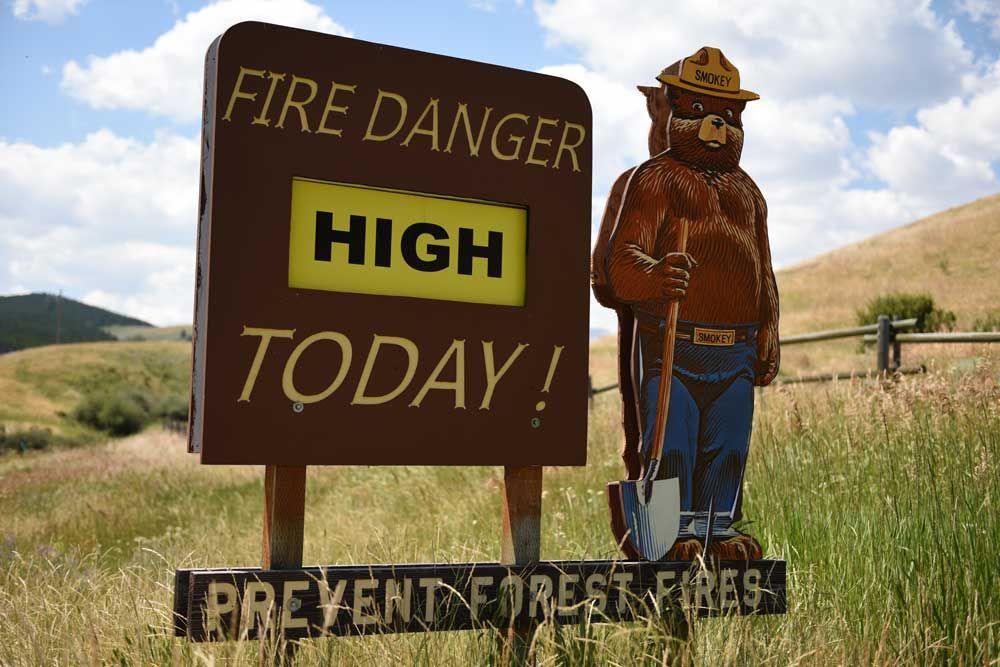California wildfires are mostly preventable
By Dawn Stover | August 14, 2018
 Robert W. Coy/Shutterstock.com
Robert W. Coy/Shutterstock.com
Reporters and elected officials often talk about the wildfires raging in California as if they are natural disasters. They aren’t.
A new analysis in an upcoming issue of the International Journal of Wildland Fire, reported by The Mercury News, found that humans caused 95 percent of all wildfires in California since 1910. Lightning strikes caused only 5 percent, mostly just in the rural northeastern corner of the state.
“While investigations are still underway, every fire now burning in California may be human-caused,” the newspaper reports. Nationwide, 84 percent of all wildfires during the past two decades were human-started.
Arson is difficult to prevent, but most human-caused fires are accidental and avoidable. There’s the timeworn example of a burning cigarette carelessly tossed out a car window, of course. But fires can also start from fireworks (the odds of a California wildfire double on July 4), improperly extinguished campfires, out-of-control burn piles, hot vehicle parts making contact with dry grass, power lines rubbing and arcing in windy conditions, and a variety of other causes. A surprising number of fires start when trailer chains or wheel rims strike pavement and send sparks flying—the likely cause of the deadly Carr Fire, now in its fourth week and still only 65 percent contained.
By starting fires in places where lightning is rare, and during months that are not part of the natural fire season, humans are increasing the “fire niche” both geographically and seasonally, according to a team of scientists who published a report last year in the Proceedings of the National Academy of Sciences. “Although climate change has likely enabled a portion of the increase in wildfire activity, the direct role of people in increasing wildfire activity has been largely overlooked,” they wrote.
Human-ignited fires and human-caused climate change are a bad combination. Climate change makes forests and fields hotter and drier, so fires can spread more quickly.
The good news is that, unlike with true natural disasters, both problems can be solved. Local, state, tribal, and federal agencies can take actions to curb emissions of planet-warming air pollution and to increase educational and enforcement activities aimed at reducing the number of human-started wildfires. Local governments can adopt building codes and zoning ordinances that limit sprawl in fire-prone areas and require homes to be built with fire-resistant materials and defensible buffer spaces. Insurance companies can adopt rates that reflect fire risks and reward defensive strategies.
In California, Governor Jerry Brown and state legislative leaders formed a Wildfire Preparedness and Response Conference Committee last month to draw up legislative amendments to “help prepare the state to deal with the increasingly extreme weather and natural disasters caused by climate change.” But even as it blames fires on climate change, the plan offers no new policies to prevent human behaviors that are planet-warming and fire-starting.
Meantime, US Interior Secretary Ryan Zinke is incorrectly claiming that California’s fires have “nothing to do with climate change” and are the result of poor forest management. While it’s true that fire suppression has led to a buildup of fuel in some places, no California forests would be burning today if humans had not ignited them.
When the Smokey Bear Wildfire Prevention Campaign began in 1944, its slogan was “Smokey Says—Care Will Prevent 9 Out of 10 Forest Fires.” That’s far more accurate than the current catchphrase of “Only You Can Prevent Wildfires.”
While individuals can certainly do more to prevent wildfires, it is not “only you” who has that responsibility. The people best positioned to prevent fires are the elected officials and businesspeople whose decisions and policies have a profound impact on the rest of us—and who are mostly just continuing to respond and rebuild as usual.
Together, we make the world safer.
The Bulletin elevates expert voices above the noise. But as an independent nonprofit organization, our operations depend on the support of readers like you. Help us continue to deliver quality journalism that holds leaders accountable. Your support of our work at any level is important. In return, we promise our coverage will be understandable, influential, vigilant, solution-oriented, and fair-minded. Together we can make a difference.
Keywords: California, natural disaster, prevention, wildfires
Topics: Climate Change, What We’re Reading
















At least 56 people have died and more than a two hundred people are still missing in the California Wildfires that devastates northern and southern California (USA) baptized Camp Fire, the most destructive in the history of this state.
I agree with everything, but I think you miss the point of how important controlled burning is. It’s way easier to remove the risk, than it is to expect people to be responsible and recognize the consequences of their actions. Obviously controlled burns aren’t 100% effective, but I think they are way easier and efficient to conduct and lobby local government for than climate change regulations and city building codes. (I really agree with codes for spacing for the reduction of spreading fire and to allow firefighters manageable space, but not with requiring fire retardant materials for their home. Houses… Read more »